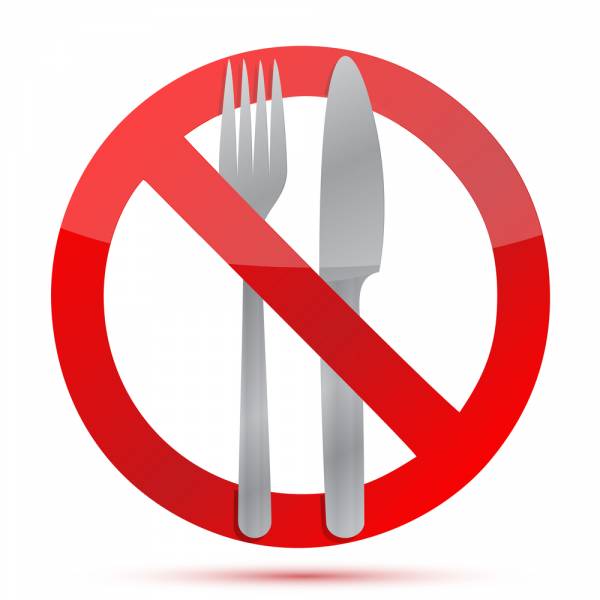Those of you who’ve read my story will know I’ve been in the “game” for some time now. That doesn’t make me an expert by any means — it actually makes me more open to change and differing opinions.
I was relatively set in my ways prior to hitting 20 years old.
I didn’t frequent the gym at all and my diet was bordering on “dead by 30 if you keep it up.” Now that I’m reflecting on such a time, it amazes me as to how close-minded I was, even more so considering my own mother, some 45-years old at the time, was training six days a week in the gym, EVERY week.
The penny eventually dropped when my “chubbiness” was finally pointed out to me. What seemed cruel at the time turned out to be an unstoppable life-changer.
What’s my point?
My point is exactly this: Never be afraid of changing your mindset when it comes to diet and nutrition.
Do I need to point out the “six to eight meals per day to boost your metabolism” argument that has been floating around for seemingly forever? Once a myth is perpetuated, it becomes an unstoppable force.
We’ve all adhered to them – yes, even me. That doesn’t mean I’m not allowed to say I was wrong and there are better ways to get your calories. New research debunks old ways, so let’s move on.
My Own Take On Meal Frequency:
Since my discovery of intermittent fasting (IF), I’ve completely changed the way I train and eat on a daily basis. Before I was introduced to it, sure I was making progress and my physique was pretty good – but it was a lot harder to MAINTAIN and required more discipline to look as sharp as I could than my wine and cheese loving self could handle.
Changing the Mindset:
A lot of us hate change. It’s human nature. I was scared as hell of losing all of the hard-earned muscle I’d achieved in my ten years of training. Was I about to then throw it out the window by eating less often? Was giving up a few meals going to send my metabolism into a spin blessing me with more rolls than a bakery?
Intermittent Fasting to the Rescue:
 It’s with an intermittent fasting protocol that I feel you really can have your cake and eat it too. You need to be strict with the timing aspect, but besides that I’ve found you can eat a lot more of the foods you love but “should” abstain from on a daily basis.
It’s with an intermittent fasting protocol that I feel you really can have your cake and eat it too. You need to be strict with the timing aspect, but besides that I’ve found you can eat a lot more of the foods you love but “should” abstain from on a daily basis.
Yes. Daily. (I’m not saying you should go and eat McDonalds every day, but treats can certainly be included)
The Importance of Timing:
For someone who trains at 6:00am and chooses to fast five or six days per week, timing becomes increasingly important. To give you an idea, the current fasting protocol I adhere to is a 16 hour fast, 8 hour re-feed (intended for lean gains). My first meal is at 12:30pm and my last meal is at 8:30pm.
Training Smack-Nang in the Middle of Fasting:
Depending on how your day looks, your training session might occur right in the middle of your fasting period. You might wonder if this is a good idea. This is where timing your nutrients comes into play — don’t worry, it’s easier to implement than it sounds.
BCAAs:
The effectiveness of branched chain amino acids (BCAAs) is well documented, so I won’t go into the details here. Suffice to say, they are in my opinion ESSENTIAL in this scenario in preventing muscle loss. Weight training with zero caloric intake before, during, or after a session may seem like madness, but this is where the BCAAs come to the rescue.
Timing BCAAs and Meals With IF:
In regards to timing the BCAA intake and when to eat, it goes something like this:
 5:45am: 10g BCAAs
5:45am: 10g BCAAs
6:00am: Weight Training
8:00am: 10g BCAAs
10:00am: 10g BCAAs
12:30pm: Meal
3:30pm: Snack (if needed)
8:30pm: Meal
(Repeat)
My Own IF Results:
I’m coming up to around one and a half years of trialing this technique. The reasons I’ve continued to incorporate IF into my lifestyle are numerous:
- It’s VERY easy to adhere to.
- I don’t feel full all the time and actually enjoy each and every meal.
- My strength has gone up noticeably.
- My abdominals have been visible year-round.
- I can eat pizza, cake and beer a lot more often.
IF for Muscle Building or Fat Loss?
In my experience body compositional changes are most notable in terms of fat-loss (the benefit of losing fat, of course, is you’ll look “bigger” anyway). That being said, increasing training volume and reps to accommodate a muscle building scenario is completely possible with this kind of diet.
I have used Reverse Pyramid Training, Olympic-style lifting and numerous other central nervous system taxing training methods. All are possible, and I’ve found through experimentation that ALL lead to an increase in strength and muscle gain.
Who Would Benefit from this Approach the Most?
Almost anyone would benefit from this kind of approach to improve body composition – from beginners to the advanced. I’ve used IF to lean down, to gain strength AND to put on muscle. Yes – the magic three.
Is IF the Ultimate Solution?
I’m definitely not saying it is – more that it works for me and a lot of other people I know REALLY well. I’m not counting out other fasting techniques such as Eat Stop Eat and Warrior Diet by any means – they also have their place.
In the end ALL fasting techniques require consistency with diet and training to see results.
Give it a shot. What have you got to lose?






